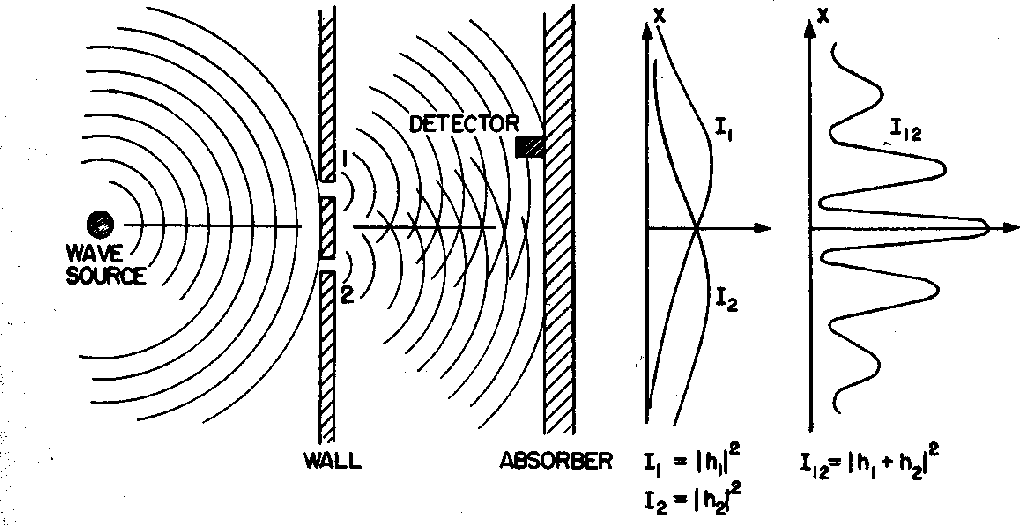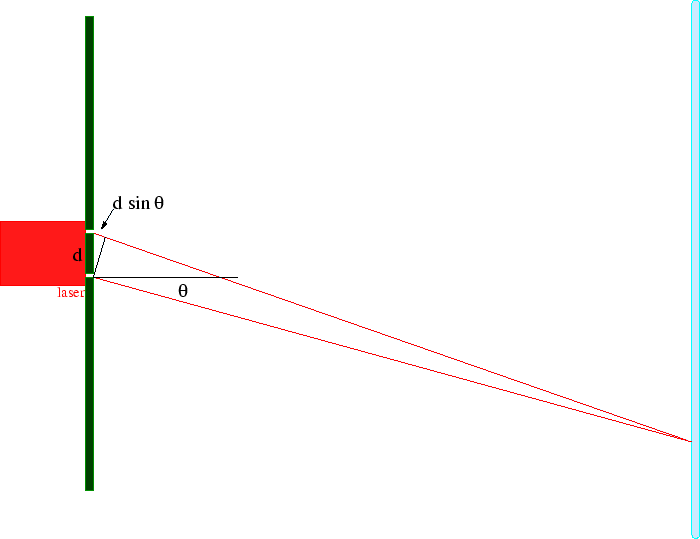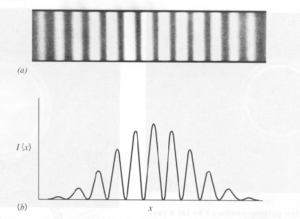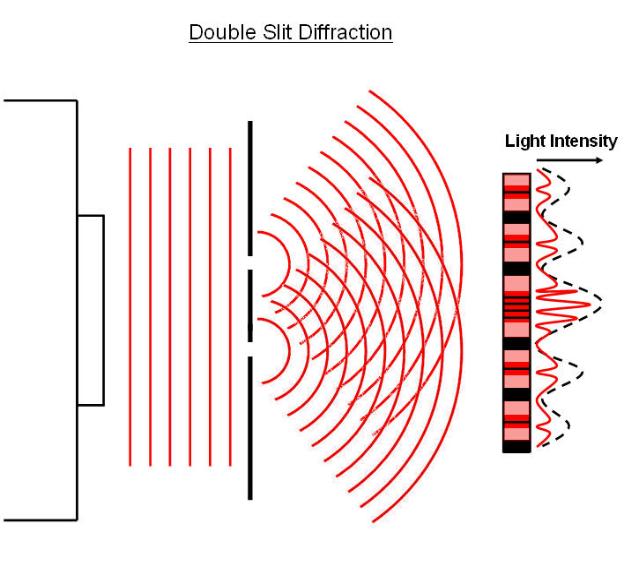what is diffraction?
Diffraction is when waves like light or sound spread out as they move around an object or through a slit. When light passes through each of the slits, it will spread out and overlap with the light from the other slit. It’s through this overlapping that the diffraction pattern of dark and bright areas is created.
Diffraction from Two Slits:
Water waves will exhibit a diffractive interference pattern in a 2 slit experiment as diagrammed below. The diagram shows the crests of the water waves at some time. Downstream from the slits, we will see constructive interference where the waves from the slits are in phase and destructive interference where they are 180 degrees out of phase, for example where a crest from one slit meets a trough from the other. The plot labeled ![]() shows the interference pattern at the location of the absorber. Diffraction is a simple wave phenomenon.
shows the interference pattern at the location of the absorber. Diffraction is a simple wave phenomenon.

The diffraction pattern from two narrow slits is particularly easy to understand in terms of waves. The setup is shown in the diagram below

EM waves of wavelength ![]() are emitted from a single light-source, like a laser. They travel to two narrow slits, (for simplicity) equidistant from the source, and a distance
are emitted from a single light-source, like a laser. They travel to two narrow slits, (for simplicity) equidistant from the source, and a distance ![]() apart. Light travels from the slits to a detection screen. A diffraction pattern can be seen on the detection screen, like the one shown in the picture below.
apart. Light travels from the slits to a detection screen. A diffraction pattern can be seen on the detection screen, like the one shown in the picture below.

Mathematical Expression:
The center of the diffraction pattern occurs at the location on the screen equidistant from each slit where the waves from the two slits are in phase (because they have traveled exactly the same distance) and the fields add, so the waves interfere constructively and there is an intensity maximum. Some distance off this center of the diffraction pattern, there will be destructive interference between waves from the two slits and the intensity will be zero.
This will occur when the distance traveled by two waves differs by  ,
,
so the waves are 180 degrees out of phase and the fields from the two slits cancel.
We can compute this location by looking at the above diagram. We assume that the distance to the screen is much greater than ![]() . For light detected at an angle
. For light detected at an angle ![]() , the extra distance traveled from slit 1 is just
, the extra distance traveled from slit 1 is just ![]() .
.
So the angle of the first minimum (or null) can be found from the equation
 .
.
More generally we will get a maximum if the paths from the slits differ by an integer number of wavelengths ![]()
and we will get a null when the paths differ by a half-integer number wavelengths. 
Although it is very difficult because electrons are charged, 2 slit electron diffraction has also been observed.

